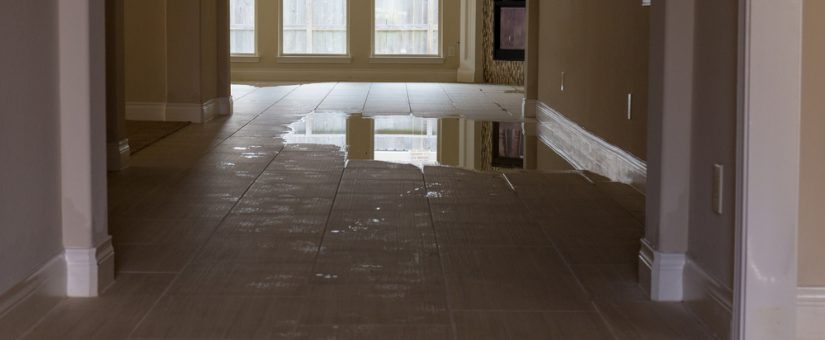A Guide to the Six Most Common Water Leak Causes in Your Home
A Guide to the Six Most Common Water Leak Causes in Your Home
Blog Article
We've come across the article on Most Common Causes of Leaky Pipes down the page on the web and decided it made perfect sense to discuss it with you in this article.
Leaks not just cause waste of water however can also create unnecessary damage to your house and also promote undesirable organic growth. Regrettably, water leakages may go unnoticed considering that most of the pipework in our home is hidden. By looking and recognizing for day-to-day circumstances that cause leakages, you can secure your home from future leaks and unnecessary damage. Today, we will consider six leak creates that may be causing your pipelines to drip.
Trespassing roots
The majority of water leakages begin outside your home as opposed to inside it. If you observe a sudden reduction in water stress, say in your faucet, require time to go out and analyze your backyard. You might observe damp spots or sinkholes in your yard, which might indicate that tree origins are invading water lines triggering water to permeate out. You can have your plumber check for invasion, particularly if you have trees or shrubs near your residential or commercial property.
Rusty water systems
This could be the cause of staining or warping on your water pipelines. If our plumbing system is old, consider replacing the pipelines because they are at a greater danger of corrosion than the more recent models.
Faulty Pipe Joints
Pipeline joints can degrade over time, resulting in water leakages. If you have loud pipelines that make ticking or banging sounds, specifically when the warm water is turned on, your pipe joints are probably under a whole lot of pressure.
Immediate temperature modifications.
Extreme temperature level adjustments in our pipelines can create them to increase as well as contract unexpectedly. This development and also contraction may cause splits in the pipelines, particularly if the temperature are below freezing. It would certainly be best if you watched on how your plumbing works. The existence of the previously stated conditions regularly indicates a high threat.
Poor Water Connectors
At times, a leakage can be triggered by loose pipes and pipelines that supply your home appliances. Typically, moving is what creates the loose water Links. You might locate in the case of a cleaning machine, a hose may spring a leakage due to drinking during the spin cycle. In case of a water connections leakage, you may see water running straight from the supply line or pools around your devices.
Blocked Drains
Obstructed drains might be annoying as well as inconveniencing, yet they can sometimes end up triggering an overflow leading to burst pipes. Maintain removing any kind of products that may go down your drains that can obstruct them to stay clear of such aggravations.
All the above are reasons for leakages however not all water leakages arise from plumbing leakages; some leakages may originate from roof covering leakages. All leakages ought to be repaired immediately to stay clear of water damages.
Leaks not only cause waste of water yet can additionally create unnecessary damages to your residence and also advertise undesirable organic development. By recognizing and also looking for day-to-day situations that trigger leakages, you can shield your home from future leaks and unnecessary damages. Today, we will certainly look at six leakage causes that may be triggering your pipes to drip.
At times, a leak can be triggered by loose pipes and pipes that supply your home appliances. In instance of a water links leakage, you might discover water running directly from the supply line or pools around your home appliances.
How To Check For Water Leak In Your Home
How To Check for Leaks
The average household's leaks can account for nearly 10,000 gallons of water wasted every year and ten percent of homes have leaks that waste 90 gallons or more per day. Common types of leaks found in the home are worn toilet flappers, dripping faucets, and other leaking valves. These types of leaks are often easy to fix, requiring only a few tools and hardware that can pay for themselves in water savings. Fixing easily corrected household water leaks can save homeowners about 10 percent on their water bills.
To check for leaks in your home, you first need to determine whether you're wasting water and then identify the source of the leak. Here are some tips for finding leaks:
Take a look at your water usage during a colder month, such as January or February. If a family of four exceeds 12,000 gallons per month, there are serious leaks.
Check your water meter before and after a two-hour period when no water is being used. If the meter changes at all, you probably have a leak.
Identify toilet leaks by placing a drop of food coloring in the toilet tank. If any color shows up in the bowl after 10 minutes, you have a leak. (Be sure to flush immediately after the experiment to avoid staining the tank.)
Examine faucet gaskets and pipe fittings for any water on the outside of the pipe to check for surface leaks.
Undetected water leaks can happen without the home or business owner even realizing. If you suspect a water leak, but not able to find the source. It is time to contact a professional water leak detection service, The Leak Doctor.
How To Find a Water Leak In Your Home
https://www.leakdoctor.com/blog/How-To-Check-For-Water-Leak-In-Your-Home_AE197.html

Hopefully you enjoyed our post on How to detect water leaks in your home. Thanks a ton for taking the time to read our piece of content. Remember to set aside a second to share this entry if you liked it. I value reading our article about Common Water Leaks In House.
Call Today Report this page